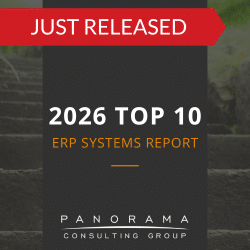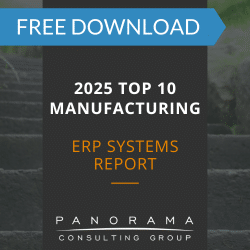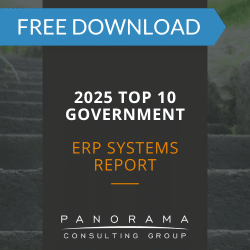 Lean Six Sigma is a phrase that encompasses lean manufacturing and six sigma process improvements into one overall management strategy. In order to understand how your company should embrace these principles, you must first understand the components of Lean Six Sigma and business process reengineering, particularly in the context of an ERP implementation.
Lean Six Sigma is a phrase that encompasses lean manufacturing and six sigma process improvements into one overall management strategy. In order to understand how your company should embrace these principles, you must first understand the components of Lean Six Sigma and business process reengineering, particularly in the context of an ERP implementation.
Efficiency and quality cover a broad spectrum within the realm of manufacturing. We’ll use the example of hand-made products produced one-at-a-time by a single individual as the least efficient and most error-prone form of manufacturing. In contrast, we’ll use semi-conductor manufacturing, with its highly automated and digitized processes, extreme precision and repeatability as the high end of the spectrum. All manufacturing falls somewhere between the two, and where your company falls will determine the cost effectiveness of embracing Lean Six Sigma protocols.
Since roughly 50% of the efficiency gains for any lean project will come from organizational and layout modifications, it’s a good idea to take a look at how people and materials currently move within your manufacturing processes. Some things to look for include:
Physical Plant
- Do raw materials enter the line and move along a straight path to their finished state?
- How often are materials handled from the time they enter the manufacturing process?
- How often are materials manipulated by people vs. machines?
- Does your manufacturing facility have enough space?
Human Resources
- Do you currently use people for tasks where machines could be substituted?
- Are employee training programs formalized or on-the-job?
- Do employees have cross-functional skill sets (i.e., do they have the capability to perform other tasks if their primary job is offline for any reason?)
Digitization
Your company’s current level of digitization is a good indicator of the gains to be realized by adopting a Lean Six Sigma approach. If your company’s functional groups (marketing, sales, accounting, etc.) use paper, have independent computer systems or don’t communicate directly with one another, you’re missing out on opportunities to increase efficiency and organizational readiness.
The goal of adopting a Lean Six Sigma strategy for your company is not about reducing defects to 3.4 million per widget – it’s about customer satisfaction. Well-designed manufacturing processes produce better products at lower cost while generating fewer complaints and product returns. Before implementing a new ERP system, organizations should adopt the Lean Six Sigma principles above and ensure that they are following a strong business process reengineering methodology.
Learn more about Lean Six Sigma by watching our on-demand webinar, Business Process Reengineering: A Key Component of ERP ROI.
Written by January Paulk, Senior Manager, Organizational Change and Business Process Management at Panorama Consulting Solutions













